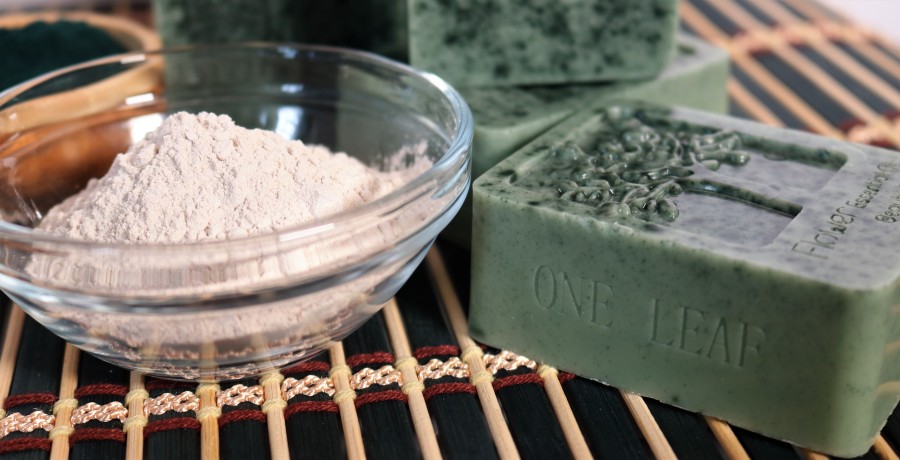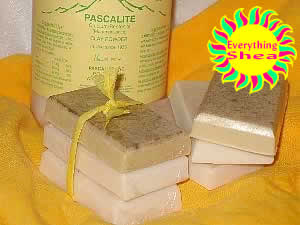Copyright 2006-2014
It’s not hard to find claims of products with extraordinary healing powers online and offline. We want quick fixes, whether over-the-counter, doctor prescribed, or self-medicating synthetic drugs. Yet it seems to be that some of the simplest and most effective remedies come directly from the earth itself. What’s earthier than clay? And how powerful is clay? For 30 million years there has been a clay mined in only one area of the United States. The location is near the Big Horn Mountains in northern Wyoming, home to the Big Horn Medicine Wheel. The wheel is approximately 10,000 feet above sea level. While it’s a lot newer than Stonehenge, interestingly enough it’s 80 feet across, and maintains 28 spokes, comparable to the lunar month. To the Native Americans, this has always been a sacred site, sort of like an astronomical observatory.
Not far from this sacred site is a mine where pascalite clay, technically known as Calcium-Bentonite Montmorillonite, hails from. This clay is mined underground to avoid contamination, and then the dense, beige colored clay is solar dried at the mountain site. Unlike the more commonly found sodium bentonite, pascalite is a non-swelling clay, meaning it doesn’t expand up to seventeen times its size when water is added. While pascalite absorbs water like a sponge, it doesn’t increase in proportion. Pascalite also is high in calcium, iron, and magnesium; making is safe for internal and external use.
Several years ago I ordered some pascalite from pascalite.com as I’d been researching an article about various clays and the references to pascalite were somewhat astounding. It seemingly cured spider bites, cleared up bad skin, stopped minor skin irritations such as poison ivy and oak from spreading and itching, and even helped revive flagging energy if taken internally. With recommendations like that, I had to try the stuff. So I got some, used it a few times, experimented with it in clay facial masks, and then forgot about it as I investigated other natural oils, butters and clays. The great thing about clay is that if it’s correctly stored, the shelf life is infinite.
I decided to try a pascalite clay mask to condition my scalp, as I’d read that many toxins are stored there due to the products we use and environmental factors. Another benefit is that pascalite was easily rinsed out within a few minutes. And I didn’t even need to shampoo it out. The results were also worth it—my hair was shinier and fuller and felt very clean—as did my scalp. Odd, but I’d just added clay to my scalp and hair and it felt cleaner than if I’d used a shampoo! So, I also put about a teaspoon’s worth into my shampoo so I could have a clay shampoo. Of course, I had to shake it really well, but again, it was easier to rinse out and I had fewer tangles. Then I made a small peppermint pascalite soap with added powdered green tea so I could have my own pascalite shampoo bar—which smelled terrific and worked really well. You can find the Pascalite Clay Soap recipe in my eBook The Joy of Melt and Pour Soap Crafting. [Seen above is the photo of the soap and the Pascalite container.]
Pascalite is different from other clays such as rhassoul, French green, Moroccan red, kaolin and even sodium bentonite. Perhaps because it’s near an energy vortex of a Medicine Wheel, or that it is solar dried at a high elevation. Maybe it’s due to the geological formation of the earth in that area of Wyoming, or all the factors contribute into making pascalite a beneficial clay. It’s named after the French trapper, Emile Pascal, the first white man who used pascalite back in the 1930’s. According to the company’s literature, “…while setting out his traps in the outcropping of clay, his badly chapped and cracked hands became covered with the cheesy earth. Later when he washed his hands off, he noticed they seemed better. He started using the clay, and encouraged his friends, as well.”
And there it is, a special clay found only in one area of the U.S. that can help assist us in a very earthy way.
NEW! Here’s a Pascalite clay soap recipe!



